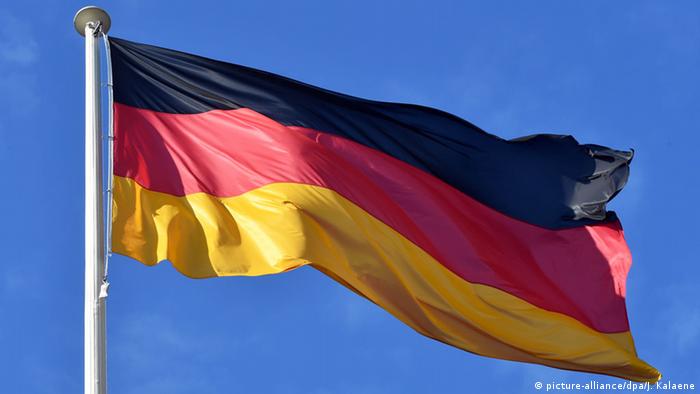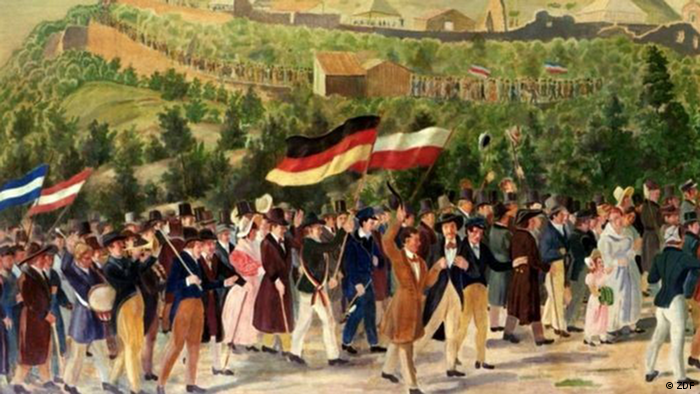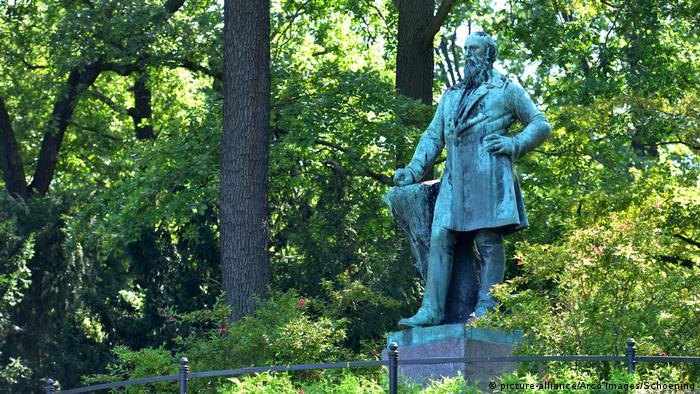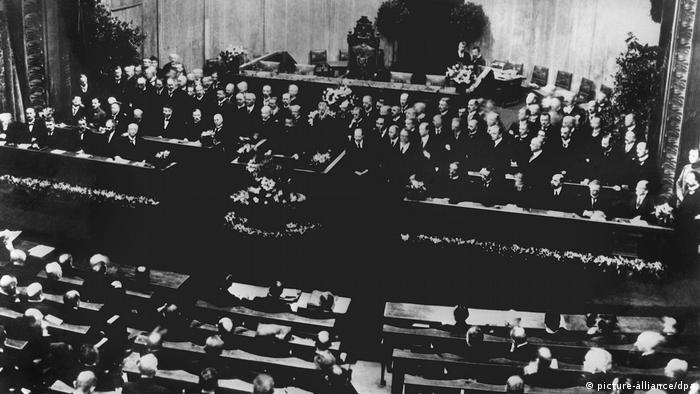One hundred years ago, Black, Red and Gold German national colors. The combination, however, goes back much further. A trip into the history and symbolism of the Germany flag.

Black, Red, Gold colours of resistance colours of the emancipation. So it seemed to Florian Geyer, a leader of the German peasants war in the early 16th century. Century. At that time, the peasants rose up against the German high nobility, and the associated representatives of the Catholic Church. Geyer was at the forefront of a social revolution, the concerns expressed in the colors of the movement. The peasant leader should have according to the legend this way: “Our Gold have beaten the nobility and priests from our sweat, until our grief was as black as the night and our anger is as red as blood. Now then, brothers, we put the red rooster on the roof.”
Emancipation and freedom were the so-called lützow’s free corps, a voluntary Association of the Prussian army, the Flag at the beginning of the 19th century. Century, in the Fighting against the army of the French Emperor Napoleon involved. Militarily, there was little to align, but the idea of a voluntary Association, has fascinated many Germans. The corps embodied the aspirations of many Germans for a United state, a government, beyond the many principalities, which dismembered the country. The German unit was a distant dream. “Black night-by the red blood of the Golden sun” – as formulated by Theodor Körner, as at the time a respected Poet, the Lützow free corps joined and 1813, fell all the way to the German Federal state.
Symbolism and pragmatism
However, there were also pragmatic reasons for the three colors, says Ulrike Dittrich, managing Director of the Stiftung Hambacher Schloss, in an interview with DW. Because a uniform Uniform there was not a first. “So you dyed your existing clothes just black. Then she was with red facings and gold buttons down the front – probably made of brass.” Symbolism and pragmatism were mixed: the Black of the night offered also because clothing made with Black especially easy to colorize.

In the character of liberalism: the hambach Festival
Black-and-Red-and-Gold are also the colors of several thousand people, made in 1832, on the way to the hambach castle, to celebrate the old dream of German unity. Freedom and sovereignty of the people were other goals that had written on the castle Gathered on the Flag. The constellation of colors of the current German flag was for the first time at the hambach Festival, near Neustadt on the wine route is used, says Ulrike Dittrich. “After the pageant, which began the liberalisation and a United Germany, and also the thoughts of a Confederate Europe wore, was hoisted the flag on the highest tower of the hambach castle.” At the castle, one of the great icon locations of the history of the German unit, blowing ever since a German flag.
The Revolution of 1848
The German Federal government, in which the Emperor of Austria, the kings of Prussia, Denmark and the Netherlands, and the German province of princes and free cities had closed, reacted repressively to the freedom movement. So it took a good decade and a half, until the German bourgeoisie, found in the liberal Revolution of 1848 together to fight for a United Germany.

Sports and freedom: Friedrich Ludwig Jahn, called the father of gymnastics Jahn
With: Friedrich Ludwig Jahn, later known as the father of gymnastics Jahn, founder of the German gymnastics movement. During the wars of liberation against Napoleon, he had devised Exercises to strengthen the soldiers for the war. Even now, in 1848, he was back. “Still I wear the German colors, so I applied in the wars of liberation,” he said.
To the success of the civil struggle was that of king Friedrich Wilhelm IV in Berlin in March rode with a black-and-red-Golden sash through the streets and to the top of the Revolution. In may 1848, the national Assembly, the provisional Parliament of the same year, emerging German Empire was constituted in the Frankfurt St. Paul’s Church. This resulted in a roundabout way, in 1871 in the German Empire. The had White, the national colors Black and Red .
100 years after the first Republic
As this Empire at the end of the First world war collapsed, and the revolution, turmoil arose in his place, the Weimar Republic, entsannen the founding fathers of the colors of 1848. 18. February, 1919, decided by a Committee of the German Länder in the national Assembly, as the German national colors.

The constituent instrument of the first German Republic: the verfasssung constituent Assembly in Weimar in 1919
“These colors were used from February 1919, in the first democracy as a flag,” says Ulrike Dittrich of the Stiftung Hambacher Schloss. “However, later this decision was made by the national socialists to undo. The Nazis burned these flags, even – and with them, symbolically, the liberal body of thought.”
Germany have drawn from this experience Teach, said Frank-Walter Steinmeier on the occasion of the 100. Anniversary of the national colors. “The Verächtern of freedom, we may these colors never leave”, the Federal President. “But let us be proud of the traditions for which they stand: Black-Red-Gold, which are democracy and justice and freedom!”
Video 02:15 live Now 02:15 Min. Share
The cradle of German democracy – hambach castle
Send Facebook Twitter google+ Tumblr VZ Mr. Wong Xing Newsvine Digg
Permalink https://p.dw.com/p/37Ntm